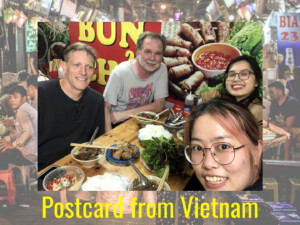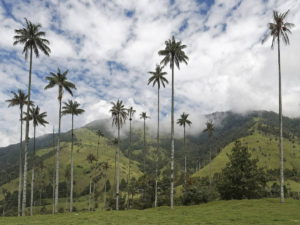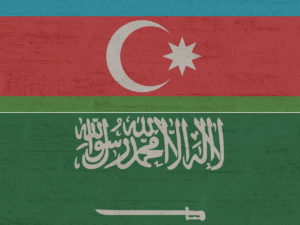The good oil: Merill’s Maltese paradise

I’ve been visiting Malta on field trips and holidays for many years. It’s like a second home. I take a little pride in knowing a few special places — you know, those “places tourists never visit” — and introducing students to them.
The Maltese are proud of their islands, and tourism is a staple industry that has grown rapidly. Malta is one of the most densely populated countries on Earth, with many new arrivals from abroad working in the tourism sector.
As a diehard defender of the merits of mass tourism, I have to tell you I have been seduced by a little piece of paradise, so secluded that it took me more than 20 years of visiting Malta to come across it. That’s in spite of Malta, the largest island of the Maltese archipelago, being only 246 square kilometres in size.

About the author
Jim Butcher is a lecturer, and writer of a number of books on the sociology and politics of tourism. Dr Butcher blogs at Politics of Tourism, tweets at @jimbutcher2, and is the founder of Tourism’s Horizon: Travel for the Millions.
Jim has also written for The “Good Tourism” Blog.
Earlier this year, when planning a trip for students to study agritourism’s economic and social role in Malta, I came across a charity called Merill and included it in our itinerary.
The Merill Rural Network seeks to empower “farmers, breeders and artisans [to] diversify their incomes and offer thanks to rural tourism, until envisioning a circular economy where tourism supports agriculture and crafts and vice versa”.
Founded by Jeanette and Christian Borg in 2010, Merill’s name comes from the Maltese word for the bluebird, il-merill, Malta’s national bird. Merill draws on Jeanette’s background in agriculture and policy, and Christian’s knowledge of the leisure industry.
Our meeting point was the tiny Our Lady of Hodegetria Chapel not far from the Maltese village of Mġarr. Christian and Akin, an intern from Nigeria studying at the University of Malta, welcomed us: a restauranter, a foodie, nine novices, and me, all from Canterbury Christ Church University in the UK.

The original Our Lady of Hodegetria Chapel dates back to 1600, built by Giovanni Maria Xara, a local land owner. The structure that stands to this day was built in 1680, and retains the original dedication to the Hodegetria, meaning ‘the Virgin Mary who shows the way’; popular for Catholic churches in the 16th and 17th centuries.
The Chapel overlooks the Victoria Lines; a series of defensive fortifications built into a ridge by the British under Queen Victoria in the 19th century. It also provides a great view of Malta’s agricultural land, some of which has fallen into disuse.
That’s the point of Merill; to put that land to good use, for conservation, agriculture, beauty, education, and the economy.
The shift from rural to urban, and the decline in the former’s economic and social role, is a phenomenon accompanying development throughout the world.
Malta, an undulating lump of limestone protruding from the sea, is no exception. Its inhabitants developed agriculture in the more fertile valleys and created terraced fields on the slopes to make best use of the limited land mass.
Over time many farmers’ children looked to maritime trades, left the islands for opportunities abroad, or found livelihoods in tourism and hospitality in the cities and along the coast. This left rural traditions bereft. It’s a process, in different forms, familiar everywhere.
Merill tries to bring economic and cultural activity back to the heartlands; to conserve valued rural environments and traditions, giving them a raison d’etre in the modern world.
You can read all about Merill on their website (you should), watch the video above (turn captioning on), and book with their agency, Malta Rural Tours (you won’t regret it).
For the remainder of this post, I want to remove my geographer’s hat and replace it with my tourist’s. Here’s a little about a natural and agricultural haven we experienced thanks to Merill’s introduction:
Christian and Akin walked us 50 metres down the hill from the Chapel, and cut into a small project run by Bella and Charlie Vella: the Tan-Nixxiegħa Olive Grove.
Charlie looks like a young Willie Nelson. When I say ‘young’, he is no spring chicken, and Willie is 92. Charlie lives an active life close to nature — tending the smallholding, propagating trees and plants, producing artisanal olive oil and other products, swimming — and it seems to suit him just fine. I’d challenge any urbanite not to visit and feel a tad jealous. I did.
These days Charlie looks after tourists too.

Charlie walks us through his small holding, introducing us to olives, his dogs, herbs, flowers, pomegranates … He has even got a pond full of fish.
The Tan-Nixxiegħa Olive Grove is peaceful. It’s far from the bustle of Malta’s urban sprawl; the happy bars and clubs of Sliema and Bugibba, and the Baroque majesty of Valletta.
Charlie tells us all about grafting trees and plants. ‘Scions’ (cuttings) are grafted (joined) onto ‘rootstock’ to propagate desirable traits such as size, colour, flavour, or resistance to disease. It’s a method with ancient, 4,000 year old roots of its own in China and Mesopotamia (present day Iraq and surrounding areas).
We stop at a platform with a table, and a cabin next to it. This is where, in a perfect mix of tranquility and conviviality, we get to sample Maltese delicacies: cheese, wine, tomato paste, bread, and, of course, the olive oil.

Many people have tried wine tasting, and you can do that here too. As with wine, there is a technique for tasting and appreciating olive oil. Christian and Charlie tell us all about the oil; its qualities and how they come about, and what to watch out for if you want the very best.
If you want to reconnect to where our food comes from, and learn a little about it too, an agritourism experience such as that offered by Tan-Nixxiegħa Olive Grove is a really fantastic way to do it.
In the face of change for Malta, Merill conserves natural and cultural heritage; linking us to the past, making it viable in the present, and offering us lessons for the future. Long may they, and the Tan-Nixxiegħa Olive Grove, continue their inspiring work.
Featured pic (top of post)
Charlie and Bella Vella produce great olive oil from their Tan-Nixxiegħa Olive Grove in Malta, according to author Jim Butcher who supplied the picture. Iż-żejt tajjeb f’Malta (‘the good oil in Malta’).
Where is this?
The pin on the “GT” Travel map that represents this “GT” Travel Experence points to Malta’s Our Lady of Hodegetria Chapel where Dr Butcher’s study group met Christian and Akin.





